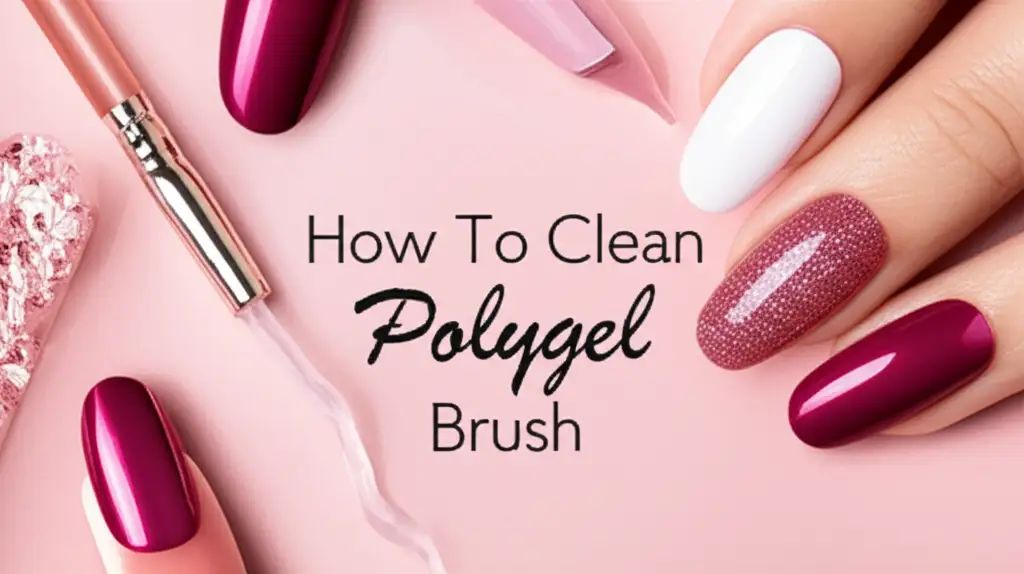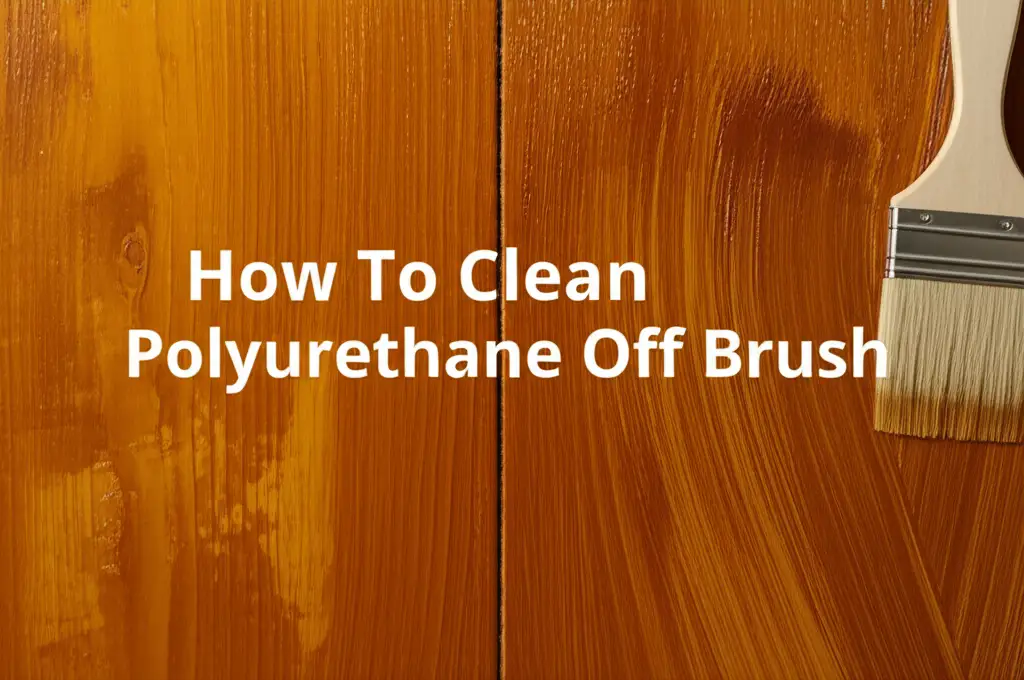· Cleaning Tips · 18 min read
How To Clean Polygel Brush

Mastering Your Polygel Brush: A Comprehensive Cleaning Guide
Polygel has become a favorite for many nail enthusiasts. It helps create beautiful, durable nails. However, working with polygel can leave your brush sticky and stiff. A dirty brush makes application difficult. It also shortens the brush’s life.
Learning how to clean polygel brush properly is important for every user. This guide will show you simple, effective ways to keep your polygel brushes in top condition. We will cover daily cleaning, deep cleaning, and essential care tips. You can extend your brush’s lifespan and ensure smooth nail applications.
Takeaway
- Clean your polygel brush after every use with slip solution or isopropyl alcohol.
- Perform deep cleaning regularly to remove stubborn polygel residue.
- Always dry your brushes completely and store them correctly to preserve bristles.
- Avoid harsh chemicals and excessive rubbing to prevent damage.
- Proper brush care improves nail application and extends tool lifespan.
To clean a polygel brush, use a lint-free wipe saturated with slip solution or 70-90% isopropyl alcohol. Gently wipe the bristles to remove polygel residue. Reshape the brush head and allow it to air dry completely. This keeps your brush soft and ready for the next use.
Understanding Your Polygel Brush: Why Cleaning Matters
Your polygel brush is a key tool in your nail kit. It helps you sculpt and spread polygel smoothly. This creates an even nail surface. Polygel is a hybrid product. It combines the strength of acrylics with the flexibility of gels. It is a sticky substance. This sticky nature helps it adhere well to nails. It also causes it to cling to your brush bristles.
A dirty polygel brush causes many problems. Polygel residue hardens on the bristles. This makes the brush stiff and difficult to use. Stiff bristles cannot pick up or shape polygel correctly. This leads to bumpy or uneven nail applications. You might waste product because of a stiff brush. A clean brush ensures smooth application every time. This helps you achieve professional-looking results.
Proper cleaning also extends the life of your brush. High-quality polygel brushes can be an investment. You want them to last as long as possible. Neglecting to clean them will make them unusable quickly. Dirt and dried polygel can damage the delicate bristles. They can break or fray. This ruins the brush’s shape and function. Regular cleaning maintains the brush’s integrity. It keeps the bristles soft and flexible.
Think of your brush as a painter’s brush. A painter cleans their brushes after each use. This prevents paint from hardening on the bristles. It keeps the brushes in working order. Similarly, your polygel brush needs consistent care. It performs best when clean. This dedication to cleanliness directly impacts your nail art quality. It also saves you money on replacement brushes. How to clean a nail brush focuses on general nail brush hygiene, which applies well here. Clean tools are essential for all nail work.
Essential Cleaning Supplies for Polygel Brushes
Having the right supplies makes polygel brush cleaning easy. You do not need many items. The basic tools are often found in your existing nail kit or home. Gathering these items before you start saves time. It ensures a smooth cleaning process. Each item plays a specific role in dissolving polygel and preserving your brush.
The most important cleaner is slip solution. This liquid is specifically designed for polygel application. It helps move and shape the polygel without stickiness. It also acts as an excellent cleaner for brushes. Slip solution contains ingredients that break down polygel. This makes it easy to wipe away residue. It is gentle on the brush bristles. Many polygel kits include slip solution.
If you do not have slip solution, isopropyl alcohol is a good alternative. Use 70% or 90% isopropyl alcohol. Higher percentages are more effective at dissolving polygel. Isopropyl alcohol evaporates quickly. This leaves no residue behind. It is also a disinfectant. This is a bonus for hygiene. However, prolonged soaking in alcohol can dry out bristles. Use it carefully.
You will also need lint-free wipes or paper towels. Lint-free wipes are best. They do not leave tiny fibers on your brush. These fibers can get into your polygel. This creates bumps on your nail surface. Cotton balls are not recommended for this reason. They often leave lint behind. Soft paper towels can work if lint-free wipes are not available. Choose ones that are durable and absorbent.
A small glass or ceramic dish is also helpful. You can pour a small amount of slip solution or alcohol into it. This allows you to dip your brush. It keeps your workspace clean. Avoid plastic dishes if using alcohol. Alcohol can degrade some plastics over time. A brush cleaner solution formulated specifically for gel brushes can also be used. These are usually gentle but effective. Always check the product label for instructions. These supplies ensure you can clean polygel brush effectively every time.
Step-by-Step Guide: Cleaning Your Polygel Brush After Each Use
Cleaning your polygel brush immediately after use is crucial. This prevents polygel from hardening on the bristles. Hardened polygel is much harder to remove later. This simple routine keeps your brush ready for the next application. It ensures optimal performance and extends the life of your valuable tool.
First, gather your cleaning supplies. You will need your slip solution or isopropyl alcohol and lint-free wipes. A small dish is also helpful. Make sure your workspace is clean and well-lit. This helps you see all the polygel residue. I find it easiest to have everything within reach.
Now, begin the cleaning process. Pour a small amount of slip solution or isopropyl alcohol into your dish. Dip your polygel brush into the liquid. Swirl the brush gently for a few seconds. This helps the cleaner saturate the bristles. It starts to dissolve any sticky polygel. You will see the polygel start to loosen.
Next, gently wipe the brush bristles on a lint-free wipe. Start at the base of the bristles and wipe towards the tip. Use light pressure. Do not pull too hard. Repeat this step multiple times. Dip the brush back into the liquid and wipe again. Continue until no more polygel residue transfers to the wipe. The wipe should come away clean. This shows all polygel is gone.
Once the brush looks clean, reshape the bristles. Use your fingers to gently mold them back into their original shape. This is important for maintaining the brush’s integrity. Do not let the bristles dry out of shape. Lay the brush flat on a clean, dry surface or hang it upright. Allow it to air dry completely. Do not cap it while wet. Moisture can damage bristles or cause mold. This simple daily cleaning routine will keep your polygel brush in excellent condition. This is similar to how you would clean a general nail brush for everyday use.
Deep Cleaning Methods for Stubborn Polygel Residue
Sometimes, polygel can dry and harden deeply in your brush. This happens if you miss a spot or delay cleaning. Daily cleaning might not be enough for this stubborn residue. When your brush feels stiff even after a quick wipe, it needs a deep clean. Deep cleaning revives your brush. It restores its flexibility and precision. This process requires a little more patience. It yields great results.
Start by saturating the brush bristles thoroughly. Pour a bit more slip solution or isopropyl alcohol into your dish. Dip the brush completely into the liquid. Let it soak for a few minutes. For very stubborn polygel, you can soak it for up to 10-15 minutes. The liquid helps soften the hardened polygel. Do not leave the brush soaking for hours. This can damage the bristles. Too much alcohol exposure can dry them out.
After soaking, gently work the bristles. You can use your fingers or a soft cloth. Gently squeeze and massage the bristles. This helps to dislodge the softened polygel. You might see more residue coming off. Be careful not to bend the bristles harshly. Move them slowly back and forth. This gentle action helps to release particles. It also works the cleaning solution deeper into the brush.
Use a new, clean lint-free wipe. Wipe the brush again. Start from the base and move to the tip. Apply gentle pressure. You might need to repeat the dip-and-wipe process several times. Use fresh cleaning solution if the old one becomes cloudy with polygel. The goal is to see absolutely no polygel transfer onto the wipe. This indicates a truly clean brush.
If polygel is still stuck, consider a brush cleaner solution. Some brands offer specific cleaners for gel brushes. These are formulated to be strong on gel but gentle on bristles. Follow the product instructions carefully. Avoid using harsh solvents like acetone. Acetone will melt synthetic brush bristles. It will ruin your brush instantly. Once clean, reshape the brush. Allow it to air dry completely. Deep cleaning helps your brush perform like new. This might be similar to how you would clean a stain off a brush in other contexts.
Common Mistakes to Avoid When Cleaning Polygel Brushes
Cleaning polygel brushes seems simple. However, some common mistakes can ruin your tools. Avoiding these errors ensures your brushes remain in prime condition. Proper technique protects your investment. It also ensures consistent results for your nail work. Being aware of pitfalls helps you avoid costly replacements.
One major mistake is using acetone. Acetone is a powerful solvent. It dissolves nail polish and some gels quickly. However, most polygel brushes have synthetic bristles. Acetone will melt these bristles. It can dissolve the glue holding the bristles together. Your brush will become a sticky, deformed mess. Always use slip solution or isopropyl alcohol for polygel brushes. Never use acetone. This is a very common mistake for beginners.
Another error is letting polygel dry on the brush. Dried polygel is hard to remove. It often requires aggressive cleaning. This can damage the bristles over time. Always clean your brush immediately after finishing your polygel application. Even if you just used it for a short time, a quick wipe down is essential. Procrastination leads to a ruined brush. Make cleaning part of your routine.
Over-soaking is also harmful. While soaking helps with deep cleaning, leaving a brush submerged for hours is bad. Prolonged exposure to alcohol can dry out synthetic bristles. They might become brittle or stiff. Alcohol can also weaken the ferrule’s glue. The ferrule is the metal part that connects bristles to the handle. A weakened ferrule can cause bristles to fall out. Soak only for the recommended time.
Rubbing the brush too hard is another common mistake. Aggressive rubbing can bend or fray the bristles. It can also pull them out of the ferrule. Always use gentle wiping motions. Let the cleaning solution do the work of dissolving the polygel. Your fingers can help gently massage the bristles. Be delicate with your tools. They are designed for precision. Cleaning hair brushes also involves avoiding harsh chemicals and excessive force to preserve bristles.
Finally, not allowing the brush to dry completely before storing it is damaging. Capping a wet brush traps moisture. This can lead to mildew or mold growth. It can also degrade the bristles or the brush handle. Always air dry your brush fully. Store it only when completely dry. Avoiding these mistakes will keep your polygel brushes performing their best for a long time.
Drying and Storing Your Polygel Brushes for Longevity
Proper drying and storage are as important as cleaning. They are the final steps in brush care. Neglecting these steps can undo all your cleaning efforts. Correct drying prevents moisture damage. Smart storage protects your bristles from bending or getting dusty. This ensures your polygel brushes remain in perfect shape for every application.
After cleaning, always ensure your polygel brush is completely dry. Moisture is the enemy of brush integrity. It can lead to mildew, especially in warm, humid environments. Mildew can damage the bristles and create an unpleasant smell. It also compromises hygiene. You do not want to introduce mildew to your polygel. A properly dried brush prevents these issues.
To dry your brush, reshape the bristles first. Gently mold them back to their original form. This maintains the brush’s precision. Lay the brush flat on a clean, lint-free surface. You can also hang it with the bristles pointing downwards. Some brush holders allow for this. Hanging helps any remaining moisture drip away. Do not stand the brush upright with bristles pointing up. Water can seep into the ferrule. This can loosen the glue over time.
Allow ample time for air drying. This usually takes several hours. The exact time depends on humidity levels. Ensure the brush is completely dry before storage. Touch the bristles to check for any dampness. If they feel even slightly cool or damp, let them dry longer. Patience is key here.
Once dry, store your polygel brushes carefully. The best way is to store them flat or upright in a brush holder. Many brush cases come with individual slots. This keeps each brush separate. It prevents bristles from getting crushed or bent. A brush roll or case protects them from dust and debris. Dust can stick to bristles and transfer to your polygel. This creates bumps in your nail work. Avoid storing brushes loose in a drawer. They can get damaged easily. Store them away from direct sunlight or extreme temperatures. These can degrade the brush handle and bristles over time. Proper drying and storage are essential steps. They help maintain your polygel brushes.
Troubleshooting Common Polygel Brush Cleaning Issues
Even with the best intentions, you might encounter issues when cleaning polygel brushes. Sometimes, a brush feels stiff despite cleaning. Other times, bristles might look fuzzy. Knowing how to troubleshoot these common problems saves your brush. It ensures you can always rely on your tools. Identifying the cause helps you apply the right fix.
One common issue is a brush that remains stiff. You cleaned it, but it still feels hard. This usually means there’s still dried polygel deep within the bristles. Your initial cleaning might not have been thorough enough. Or, the polygel might have hardened significantly. For this, a deeper cleaning is necessary. Repeat the deep cleaning steps. Soak the brush for a longer period in slip solution or alcohol. Gently massage the bristles. Use a clean wipe repeatedly. Sometimes, a very small amount of dish soap can help break down stubborn residue. Rinse very thoroughly if using soap.
Another problem is fuzzy or splayed bristles. If your brush bristles spread out or look frizzy, it often points to improper cleaning or drying. Over-soaking in alcohol can dry out synthetic bristles. This makes them brittle. Rubbing the brush too hard during cleaning can also splay them. Acetone exposure is another cause. If acetone touched your brush, it is likely ruined. For slightly splayed bristles, try re-shaping them. Wet them slightly with slip solution. Then, use your fingers to gently press them back into shape. Hold them in place with a brush guard or a piece of tape while drying. This helps them regain their form.
Sometimes, brushes might feel oily or leave streaks. This can happen if your cleaning solution leaves residue. Or, you might not have wiped enough. For alcohol, ensure it is evaporating completely. For slip solution, ensure you wipe until no residue transfers. If you used soap, it must be rinsed out entirely. A final wipe with clean alcohol can help. This removes any lingering oily film.
Discoloration can also occur. Polygel, especially pigmented types, can stain bristles. This is mostly cosmetic. It does not affect brush performance. However, if it bothers you, try soaking the brush in a very mild bleach solution for a few minutes. This is a last resort and can damage bristles if left too long. Always rinse thoroughly afterward. Understanding these issues helps you keep your polygel brushes in working order.
Maintaining Your Polygel Brushes: Best Practices for Nail Artists
Maintaining your polygel brushes is an ongoing commitment. It is not just about cleaning after use. It involves adopting best practices throughout your nail work. This proactive approach ensures your brushes last longer. It also guarantees consistent, high-quality nail applications. Every nail artist, professional or hobbyist, benefits from these habits.
Firstly, always wipe your brush frequently during use. While working with polygel, residue can build up on your brush. Keep a lint-free wipe and a small dish of slip solution nearby. Dip and wipe your brush every few minutes. This prevents polygel from drying on the bristles. It makes the final cleanup much easier. This simple habit saves you from deep cleaning often. It keeps your brush performing optimally during application.
Secondly, avoid cross-contamination. Use separate brushes for different polygel colors or types. If you only have one brush, clean it thoroughly between different colors. Residual color can mix. This can dull or alter your new polygel color. Also, avoid using your polygel brush for other nail products. Do not use it for acrylics, hard gels, or top coats. Different products require different brush types and cleaning methods. This keeps your polygel brush specialized and efficient.
Thirdly, invest in quality brushes. High-quality polygel brushes are often made with better synthetic bristles. They are designed to withstand regular cleaning. Cheap brushes might shed bristles or deform easily. A good brush, when cared for, will last much longer. This reduces your long-term costs. It also improves your application experience. Consider it an investment in your craft.
Fourthly, protect your brushes from light and air. Polygel is cured by UV or LED light. If your brush is exposed to these lights, any polygel on it will cure. This instantly ruins the brush. Always keep your brush away from the lamp during application. Cap it or store it away from light sources when not in use. Air exposure can also dry out bristles over time. A brush cap or case helps prevent this. These practices ensure your polygel brushes remain effective.
Finally, inspect your brushes regularly. Look for any signs of damage. Check for splayed bristles, loose ferrules, or hardened residue. Addressing small issues early prevents them from becoming big problems. A well-maintained brush is a joy to work with. These habits will make your polygel applications smoother and more enjoyable. These practices apply to all specialized tools, similar to how one might clean a face brush for daily use, maintaining its integrity.
FAQ Section
How often should I clean my polygel brush?
You should clean your polygel brush immediately after every single use. Even if you only used it for a short time, a quick wipe with slip solution or isopropyl alcohol is important. This prevents polygel from hardening on the bristles, which can make the brush stiff and difficult to use for your next application.
Can I use nail polish remover to clean my polygel brush?
No, you should never use regular nail polish remover (which contains acetone) to clean your polygel brush. Most polygel brushes are made with synthetic bristles, and acetone will melt or severely damage them. Always use slip solution or 70-90% isopropyl alcohol instead.
What if my polygel brush becomes stiff and hard?
If your polygel brush becomes stiff and hard, it means polygel has dried and hardened deep within the bristles. You need to deep clean it. Soak the brush in slip solution or isopropyl alcohol for 5-15 minutes. Gently massage the bristles to loosen the residue. Then, wipe thoroughly on a lint-free pad until clean.
Is it safe to soak my polygel brush in alcohol overnight?
No, it is not safe to soak your polygel brush in alcohol overnight. Prolonged exposure to isopropyl alcohol can dry out the synthetic bristles, making them brittle or splayed. It can also weaken the glue holding the bristles in the ferrule. Only soak for the necessary time, typically 5-15 minutes for deep cleaning.
How do I store my polygel brush after cleaning?
After cleaning and ensuring your polygel brush is completely dry, reshape the bristles to their original form. Store the brush flat or in an upright brush holder with the bristles pointing downwards. A brush cap or case can protect it from dust and prevent the bristles from getting bent or damaged during storage.
Can I use soap and water to clean my polygel brush?
While some mild dish soap can help break down very stubborn polygel residue during deep cleaning, it’s not the primary method. Always rinse the brush thoroughly with water afterward to remove all soap residue. Then, clean with slip solution or alcohol to ensure no polygel remains, and allow to air dry completely.
Conclusion
Cleaning your polygel brush properly is an essential part of nail care. It ensures your tools last longer. It also helps you achieve flawless nail applications every time. We learned the importance of immediate cleaning after each use. We also covered deep cleaning methods for stubborn residue. Remember to always use slip solution or isopropyl alcohol. Avoid harmful substances like acetone.
By following these simple steps, you extend the life of your valuable polygel brushes. You keep their bristles soft and flexible. This routine will save you money on replacements. It also improves the overall quality of your nail artistry. Make brush care a regular part of your nail routine. Your polygel brush will thank you. Start caring for your tools today. Your nails will look better for it.
- polygel brush cleaning
- nail brush care
- brush maintenance




